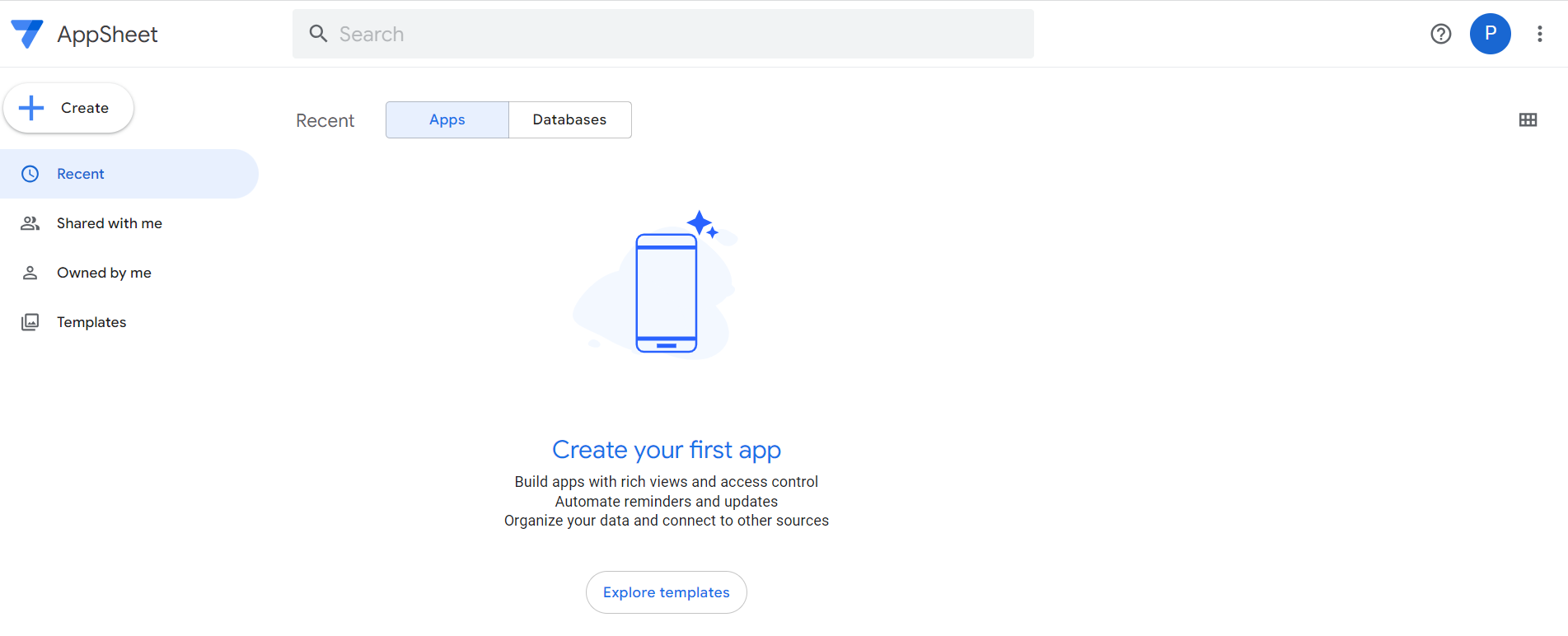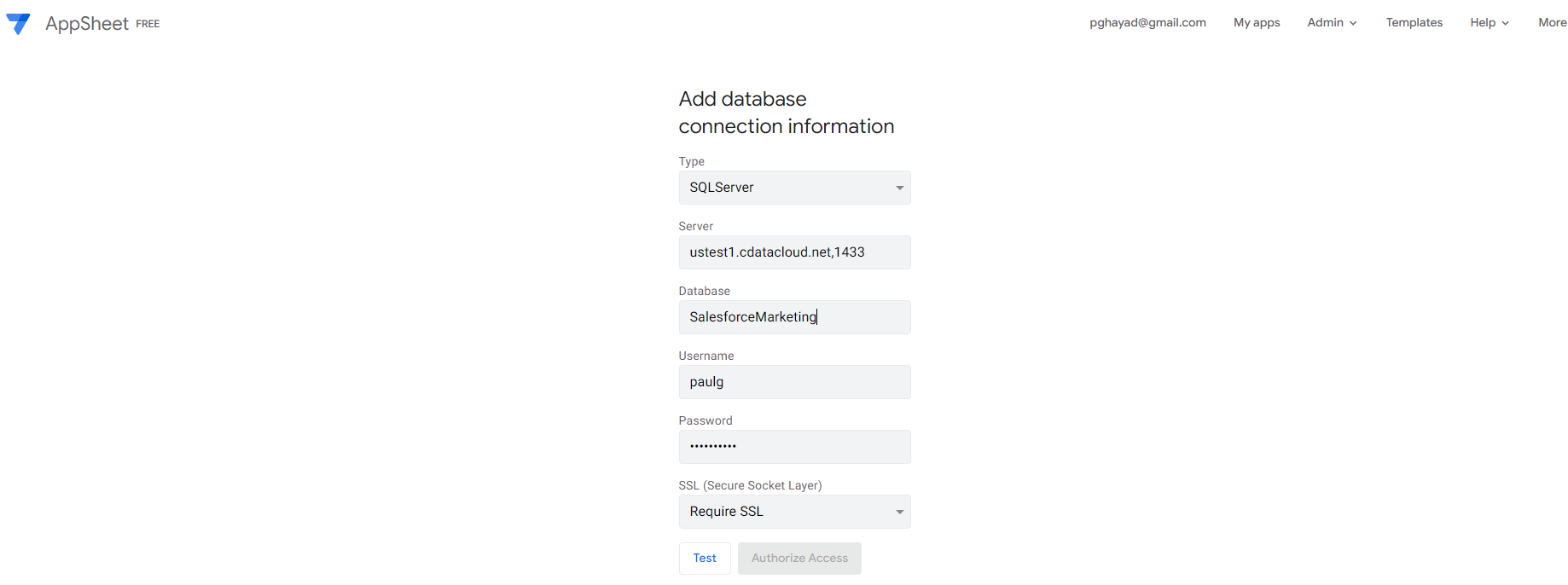Discover how a bimodal integration strategy can address the major data management challenges facing your organization today.
Get the Report →Create Bitbucket-Connected Business Apps in AppSheet
Use CData Connect Server to connect to Bitbucket from AppSheet and build custom business apps using live Bitbucket data.
AppSheet provides a no-code development platform for application software, which allows users to create mobile, tablet, and web applications. When paired with CData Connect Server, you get instant access to Bitbucket data for business applications. This article shows how to create a virtual database for Bitbucket in Connect Server and build a simple app from Bitbucket data in AppSheet.
CData Connect Server provides a pure SQL Server interface for Bitbucket, allowing you to easily build reports from live Bitbucket data in AppSheet — without replicating the data to a natively supported database. As you build visualizations, AppSheet generates SQL queries to gather data. Using optimized data processing out of the box, CData Connect Server pushes all supported SQL operations (filters, JOINs, etc) directly to Bitbucket, leveraging server-side processing to quickly return the requested Bitbucket data.
Create a Virtual SQL Server Database for Bitbucket Data
CData Connect Server uses a straightforward, point-and-click interface to connect to data sources and generate APIs.
-
Login to Connect Server and click Connections.
![Adding a connection]()
- Select "Bitbucket" from Available Data Sources.
-
Enter the necessary authentication properties to connect to Bitbucket.
For most queries, you must set the Workspace. The only exception to this is the Workspaces table, which does not require this property to be set, as querying it provides a list of workspace slugs that can be used to set Workspace. To query this table, you must set Schema to 'Information' and execute the query SELECT * FROM Workspaces>.
Setting Schema to 'Information' displays general information. To connect to Bitbucket, set these parameters:
- Schema: To show general information about a workspace, such as its users, repositories, and projects, set this to Information. Otherwise, set this to the schema of the repository or project you are querying. To get a full set of available schemas, query the sys_schemas table.
- Workspace: Required if you are not querying the Workspaces table. This property is not required for querying the Workspaces table, as that query only returns a list of workspace slugs that can be used to set Workspace.
Authenticating to Bitbucket
Bitbucket supports OAuth authentication only. To enable this authentication from all OAuth flows, you must create a custom OAuth application, and set AuthScheme to OAuth.
Be sure to review the Help documentation for the required connection properties for you specific authentication needs (desktop applications, web applications, and headless machines).
Creating a custom OAuth application
From your Bitbucket account:
- Go to Settings (the gear icon) and select Workspace Settings.
- In the Apps and Features section, select OAuth Consumers.
- Click Add Consumer.
- Enter a name and description for your custom application.
- Set the callback URL:
- For desktop applications and headless machines, use http://localhost:33333 or another port number of your choice. The URI you set here becomes the CallbackURL property.
- For web applications, set the callback URL to a trusted redirect URL. This URL is the web location the user returns to with the token that verifies that your application has been granted access.
- If you plan to use client credentials to authenticate, you must select This is a private consumer. In the driver, you must set AuthScheme to client.
- Select which permissions to give your OAuth application. These determine what data you can read and write with it.
- To save the new custom application, click Save.
- After the application has been saved, you can select it to view its settings. The application's Key and Secret are displayed. Record these for future use. You will use the Key to set the OAuthClientId and the Secret to set the OAuthClientSecret.
![Configuring a connection (SQL Server is shown).]()
- Click Save Changes
- Click Privileges -> Add and add the new user (or an existing user) with the appropriate permissions.
With the virtual database created, you are ready to connect to Bitbucket data from AppSheet.
Connect to Bitbucket in AppSheet
The steps below outline connecting to CData Connect Server from AppSheet to create a new Bitbucket data source.
- Log into AppSheet.
- Click the letter icon in the top-right corner, then select Account Settings.
![Creating a new data source]()
- Click the Sources tab and click + New Data Source. Then, select Cloud Database.
![Creating a new data source]()
- Set the connection information to the following:
- Type: SQLServer
- Server: the endpoint for your instance, including port, for example, CONNECT_SERVER_URL,3306
- Database: the virtual database, for example, Bitbucket1
- Username: a Connect Server user with permissions for the database
- Password: the password for the above Connect Server user
- SSL: Require SSL
![Connecting to Connect Server]()
- Click Test. Then, click Authorize Access.
Create an App
Once you create the data source for Bitbucket, you can start building apps on Bitbucket data.
- Start by clicking + Create -> App -> Start with existing data.
- Name the app and select an appropriate category, based on your data. Then, click Choose your data.
- Select the newly created data source (e.g., Bitbucket1).
- Select the table or view with the data you want.
![Selecting a table]()
At this point, you can configure the design of your app, selecting which columns from the selected table to display, use as labels, and more. Preview the app in the preview panel and then publish or share it when ready.

To get SQL data access to 200+ SaaS, Big Data, and NoSQL sources directly from your applications, try the CData Connect Server.











